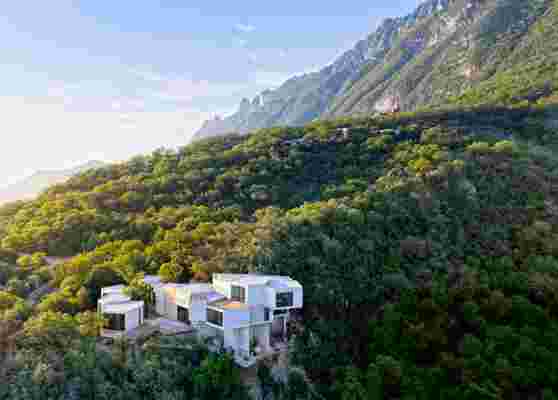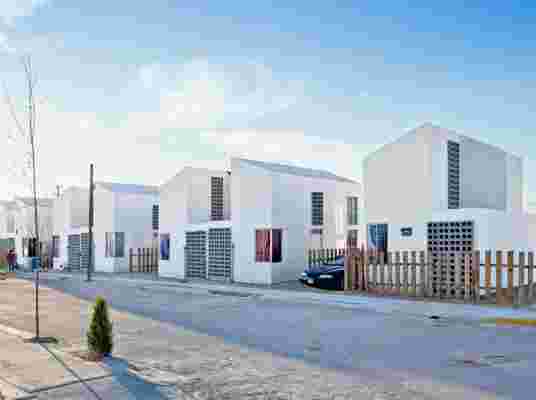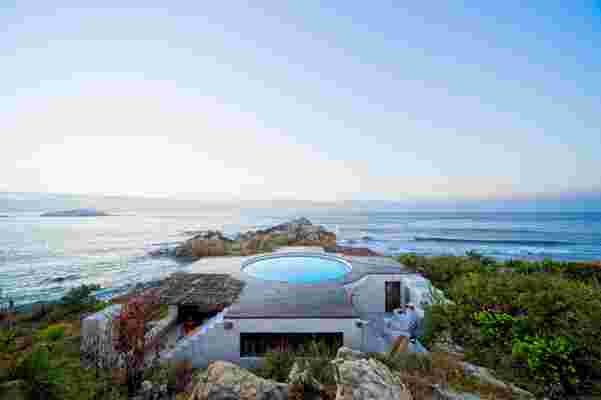Mexican Architect Tatiana Bilbao Reimagines Smart Affordable Housing
The architecture field, it seems, has rediscovered its conscience, with recent temperature-taking biennial exhibitions casting a spotlight on projects that are socially engaged and economically sustainable. Indeed, some of the industry’s buzziest names have become stars by doing work that is about doing good—not least Tatiana Bilbao. Tellingly represented at both the Chicago and Venice architecture biennials this past year, the Mexico City–based talent has been winning international accolades for a diverse practice that’s grounded in a humanitarian spirit, whether she’s designing a dramatic mountainside villa, a sleek university technology center, an art-filled botanical garden, or smart affordable housing.

A residence on the outskirts of Monterrey, Mexico, by architect Tatiana Bilbao consists of discrete five-sided volumes. She calls it “a lab of architectonic experiences.”
Bilbao’s prototype for an adaptable low-cost home became one of the most talked-about exhibits in the Chicago show. Conceived to address Mexico’s housing shortage, her design incorporated years of research. After interviewing workers to learn how they want to live, Bilbao devised a two-story, two-bedroom modular structure that, at 775 square feet, is not only significantly larger than the minimum mandated by Mexican regulations but can also easily be expanded as a family grows, with terraces that can become extra rooms and double-height spaces to which mezzanines can be added. Though the model featured a concrete-block core with lightweight wood shipping pallets used for some walls, the homes can be made from different materials to adapt to a variety of settings. Around 20 houses have already been constructed in Ciudad Acuña, along the Texas border, while plans are under way to build as many as 3,000 per year in the southern state of Chiapas. Each dwelling will cost around $7,000, with the government covering a portion, based on need.
“Architecture really can change your life,” Bilbao says. “I take that responsibility seriously. At some point the profession had lost sight of that, and we have to realize what we have in our hands.”

In Ciudad Acuña, Mexico, Bilbao has realized a group of low-income houses that cost as little as $7,000 each.
Though Bilbao tends to prefer elemental forms and humble materials even when a client and budget allow greater freedom, she doesn’t shy away from bold gestures when context calls for them. Her 2011 Ventura House (which she describes as “a lab of architectonic experiences”) is an arresting cluster of pentagonal volumes on a mountain overlooking Monterrey. And a nearby estate she’s doing for members of the same family will eventually feature three separate structures, envisioned as a study in materials: One is clad in mirrored glass, one in wood, and one in custom-patterned ceramic blocks. “It’s really about embracing the beauty of the site,” says Bilbao, who insists on the close involvement of her clients, preferring to think of them as the true designers and of herself and her team as merely “the translators.”

Artist Gabriel Orozco commissioned her to construct his sculptural oceanside home with a breathtaking rooftop pool.
Bigger commissions continue to roll in. The Pritzker Prize–winning firm Herzog & de Meuron tapped Bilbao to create three residential buildings (two with low-income units, one with market-rate apartments) as part of a major development in Lyon, France, while the University of Monterrey has enlisted her to design a million-square-foot student center next to its signature Tadao Ando building. Already spending lots of time in the U.S.—teaching at Yale and, this fall, Columbia—the in-demand Bilbao expects to soon announce her debut project here. No doubt it will be the first of many. tatianabilbaoom
Bilbao masterminded this botanical garden in the city of Culiacán.
Related: See More AD Innovators